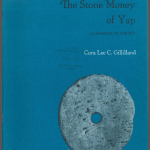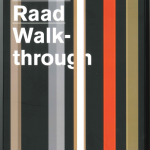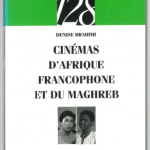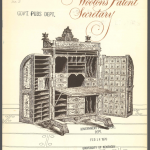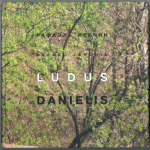A public service announcement from Deb, in Troublesome Catalogers and Magical Metadata Fairies.
The demon lovers : a psychosexual study of witchcraft and demonology / by Joseph R. Rosenberger ; introduction by Karl von Gottlieb. (OCLC #52633985)
RDA 7.7 (Intended Audience) is the class of user for which the content of a resource is intended, or for whom the content is considered suitable. It may be defined in many ways, including by age group (e.g., children, young adults, adults), and may be taken from any source.
This piece states its intended audience directly on the cover (“Positively adults only!”) so we could record that in the new MARC 385 field (defined in Tech Bulletin 264), as well as in the Audn fixed field (“e”).
In RDA, Intended Audience is not generally considered core, but for LC, it is core for books intended for children; for NLA it is core if readily ascertainable. This book is not intended for children, and we don’t consistently code the element (or consider it important for selection in our library) so I did not record this information when upgrading the master record.
(As a bonus, a previous patron has helpfully scribbled the review “Garbage!” on the title page of our local copy!)
The stone money of Yap : a numismatic survey / Cora Lee C. Gillilland. (OCLC #1255837)
The subject heading for Yap is:
Yap (Micronesia)
(direct order) so if that were the main subject of the title, that subject would be assigned in a 651. The authority record for that heading includes this field:
781 _0 ǂz Micronesia (Federated States) ǂz Yap
The 781 field is “Subdivision Linking Entry-Geographic Subdivision”, so indicates how that heading should be used as a geographic subdivision of a topical heading (indirect order). In this bib record, this appears as:
650 _0 ǂa Ethnology ǂz Micronesia (Federated States) ǂz Yap.
Walid Raad, walkthrough. (OCLC #890913763)
This title consists of one pamphlet and seven posters, gathered inside a colorful case. There are several records for it in OCLC, and each handles the physical descriptions in different ways, depending on what the cataloger judged to be was the primary content:
300 __ ǂa 2 v. : ǂb col. ill. ; ǂc 22-24 cm., in slipcase 25 cm.
+ ǂe 6 posters.
300 __ ǂa 6 v. (in slipcase) : col. ill. ; 26 cm.
300 __ ǂa 96 p. ǂb ill. ǂc 25 x 18 cm
I preferred the conciseness of this record:
300 __ ǂa 1 case : ǂb color illustrations ; ǂc 26 cm.
with the details of the contents in a 500 note. RDA 3.4.1.3 (Recording Extent) says to use units from the list of carrier types (“case” is not on this list), but provides an alternative to use a word in common usage (including a trade name) instead.
British Library has an interesting PS for this rule:
Apply alternative b) for hand held digital resources if the appropriate term in common usage is readily ascertainable; for example, use the terms CD-ROM, DVD and DVD-ROM in preference to using a term from the list of carrier types at 3.3.1.3
Cinémas d’Afrique francophone et du Maghreb / Denise Brahimi. (OCLC #37413829)
While you can search titles for words using diacritics in Connexion client (there is a button to Enter Diacritics), you will find them just as easily typing them without, like for “cinémas”, you can search:
cinemas
Similarly, some punctuation between letters does not separate them into multiple words in the index, so you can search for “d’Afrique” as:
dafrique
Words with apostrophes index with a space as well, so you could also find this record with the search:
"d afrique"
but this would not retrieve records where a right single quote (’) is used, like in this record, so I am usually happiest using no space.
Other punctuation marks have different behavior. For example, periods, commas or hyphens between words are equivalent to space, so this title is also retrieved by the search:
francophone-et,du.maghreb
Mikra Anglia. (OCLC #883268494)
Transliteration can be more than a strict single character-by-character substitution. For example, the ALA-LC Romanization table for Modern Greek equates the vernacular “γγ” with “ng” rather than “gg”.
The cataloger also supplied a translation of the title in a 242:
242 10 ǂa Little England. ǂy eng
HTML5 game development insights / Colt McAnlis [and 19 others]. (OCLC #870564044)
RDA 2.4.1.5 about recording statements of responsibility naming more than one person allows an optional omission: If a single statement of responsibility names more than three persons performing the same function, you may omit any but the first, and summarize your omission.
The LC-PCC PS and NLA PS say to generally not omit names, though the D-A-CH AWR specifically allows it for extensive lists of names. I like the BL-PS, which says to not omit “unless onerous”. I typically do not omit, but made an exception in this (onerous) case:
245 10 ǂa HTML5 game development insights / ǂc Colt McAnlis
[and 19 others].
The king of desks : Wooton’s patent secretary / by Betty Lawson Walters. (OCLC #49110)
MARC field 019 is used in OCLC for OCLC Control Number Cross-Reference; that is, when two (or more) OCLC records are merged, one OCLC accession number is kept for the record, and the others are put into 019, each into its own ǂa like:
019 __ ǂa 253458412
Records can be merged when a duplicate is accidentally created, such as when a master record is not found for some reason, or when the cataloger did not realize that the differences between descriptions are not sufficient to justify a new record. They can also be merged when cataloging rules change; for example, many older ebook records have 019 fields from when the title was cataloged on multiple records (each specific to one vendor/aggregator), and have since been combined into one provider-neutral record.
Ludus Danielis / Rafaėlʹ Levchin. (OCLC #52873141)
Under AACR2, when elements of the publication statement are not identified, these Latin abbreviations are recorded instead:
- Place of publication: S.l. – sine loco
- Publisher’s name: s.n. – sine nomine
There is no phrase for unknown date; one can usually at least guess at the century, like: [19–?]
For this title, some elements are unknown, so this was recorded as:
260 __ ǂa [S.l. : ǂb s.n.], ǂc 2002.
On a catalog card, this would be very clear, as the brackets would clearly surround both, but in an electronic environment where each subfield is separately indexed, the meaning of the brackets is less clear:
- Place of publication: [S.l
- Publisher’s name: s.n.]
Under current ISBD rules, each element would each get its own brackets:
[S.l.] : [s.n.], 2002.
In RDA, these concepts are expressed in phrases:
[Place of publication not identified] : [Publisher not identified],
[Date of publication not identified].
though their use is generally not recommended. The LC-PCC PS for RDA 2.8.2.6 says to supply a probably place of publication when possible, and the one for RDA 2.8.6.6 includes a detailed procedure for supplying a probably publication date.
Green woodwork : working with wood the natural way / Mike Abbott ; with a foreword by Richard La Trobe Bateman. (OCLC #27431448)
This volume is a 1991 reprint of a title originally published in 1989. Had I been doing original cataloging for this piece, I would have recorded only the 1989 publication date (like in this record) as printing date does not justify a new record in OCLC. There is a more popular (DLC) record for the reprint itself, indicating a publication with these fields:
DtSt: r Dates 1991, 1989
260 __ ǂa Lewes, East Sussex : ǂb Guild of Master Craftsman
Publications ; ǂa New York, N.Y. : ǂb Distributed by
Sterling Pub., ǂc 1991.
500 __ ǂa Reprint. Originally published: 1989.
The Date: search box only searches the Date1 index (yr:) but not the Date2 index (yy:), so restricting the search to 1989 did not find the DLC record. When I’m not sure how a title has been cataloged but still wish to restrict by date, I use a range:
Date: 1989-1991


